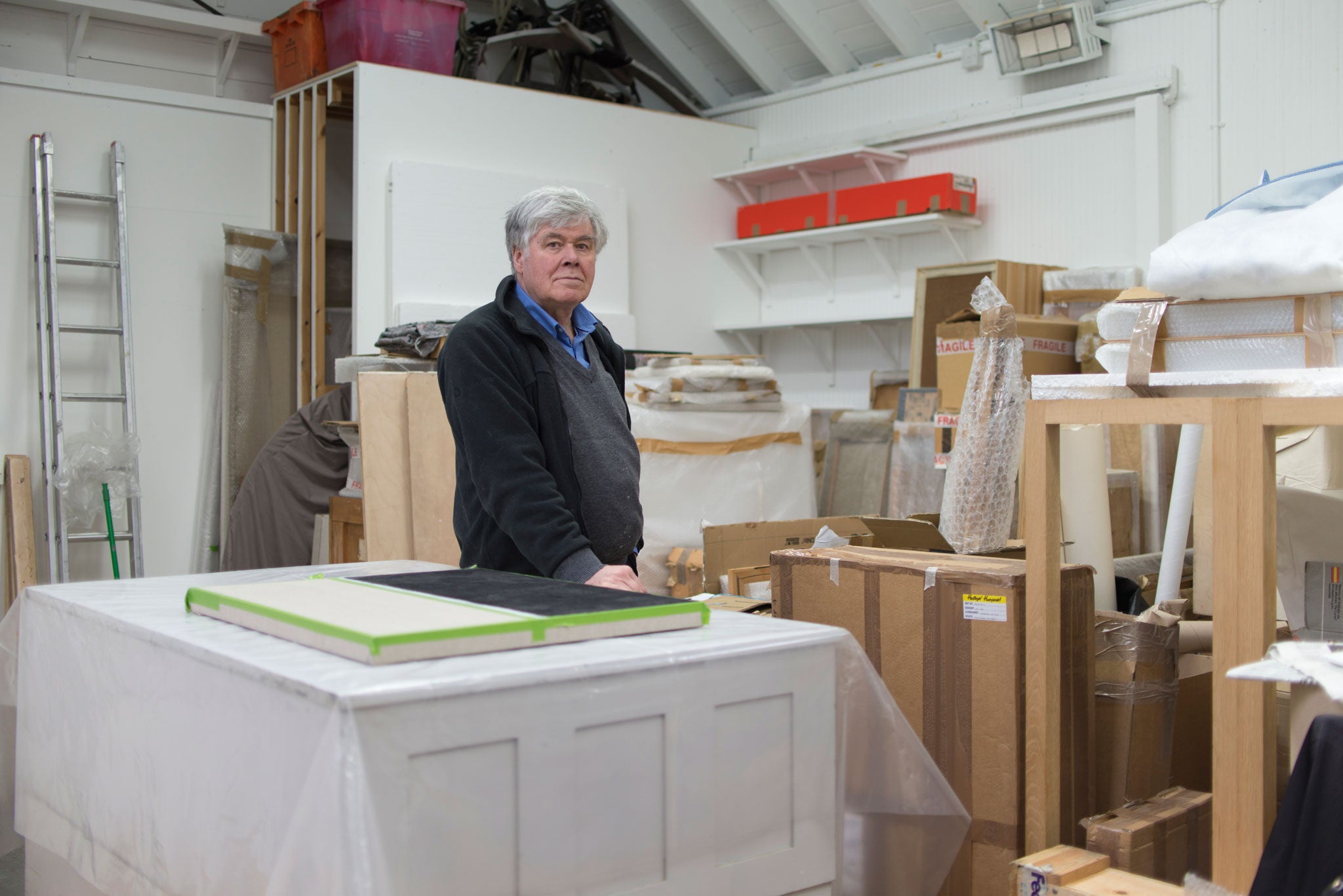In the studio: Alan Johnston, artist
'I was extending an ever-present engagement with the creation of shadow'

Alan Johnston works in a studio backing on to the Edinburgh Botanical Gardens. Its inhabitants have included British artist William Brassey Hole, best remembered for his large processional frieze in the Scottish National Gallery. "Hole designed the studio for himself. He had a thing for large paintings – large easel paintings. It is quite church-like. It is for height."
Johnston only moved in seven months ago and he has not fully unpacked. A few paintings in his rigorous, minimal style hang on the wall, made with his favoured materials – pencil and beeswax.
Tate Britain director Penelope Curtis recently commissioned Johnston to make a work for the refurbished Tate Britain. Tasked with choosing a site, he opted for the ceiling in architect Bruno Taut's vaulted space in the basement. "Taut's big thing was crystalline form, alpine form. One space that is interesting is the cellar with the strange, almost medieval vaults."
Johnston's team worked alongside the construction workers; it took five weeks and 12 people to finish. Johnston prefers to work alone but there was not enough time. His tools included a clutch pencil with a hard lead to deal with the ceiling material. He relates how he was in Budějovice in the Czech Republic and was told by the architect he was collaborating with that Koh-I-Noor Hardtmuth, the pencil factory, was nearby; he asked if they could make him a special hard lead.
Johnston is not new to collaborating with architects. Many of his works, drawing-based and minimal in concept, are site-specific and made alongside partnering architects. His subtle interventions draw attention to architectural features, such as the spaces above in the case of Taut's ceiling: "I was extending and further developing an ever-present engagement with the creation of shadow."
Born in 1945 in Edinburgh, Johnston teaches at the University of Edinburgh. He is a softly spoken man who counts many of the world's great artists as friends. Facing his creations, I have been observing how light plays across the surfaces, illuminating areas of interest. A simple pencil-line drawn from one end wall to another recalls the horizon, and the work of other great minimal painters. Johnston's quiet intervention at Tate Britain may not be in your face but it will probably be the most harmonious, fulfilling his determination: "A quiet and appropriate dialogue of forms."
Alan Johnston, Bartha Contemporary, London W1 (barthacontemporary.com) to 15 February
Subscribe to Independent Premium to bookmark this article
Want to bookmark your favourite articles and stories to read or reference later? Start your Independent Premium subscription today.

Join our commenting forum
Join thought-provoking conversations, follow other Independent readers and see their replies